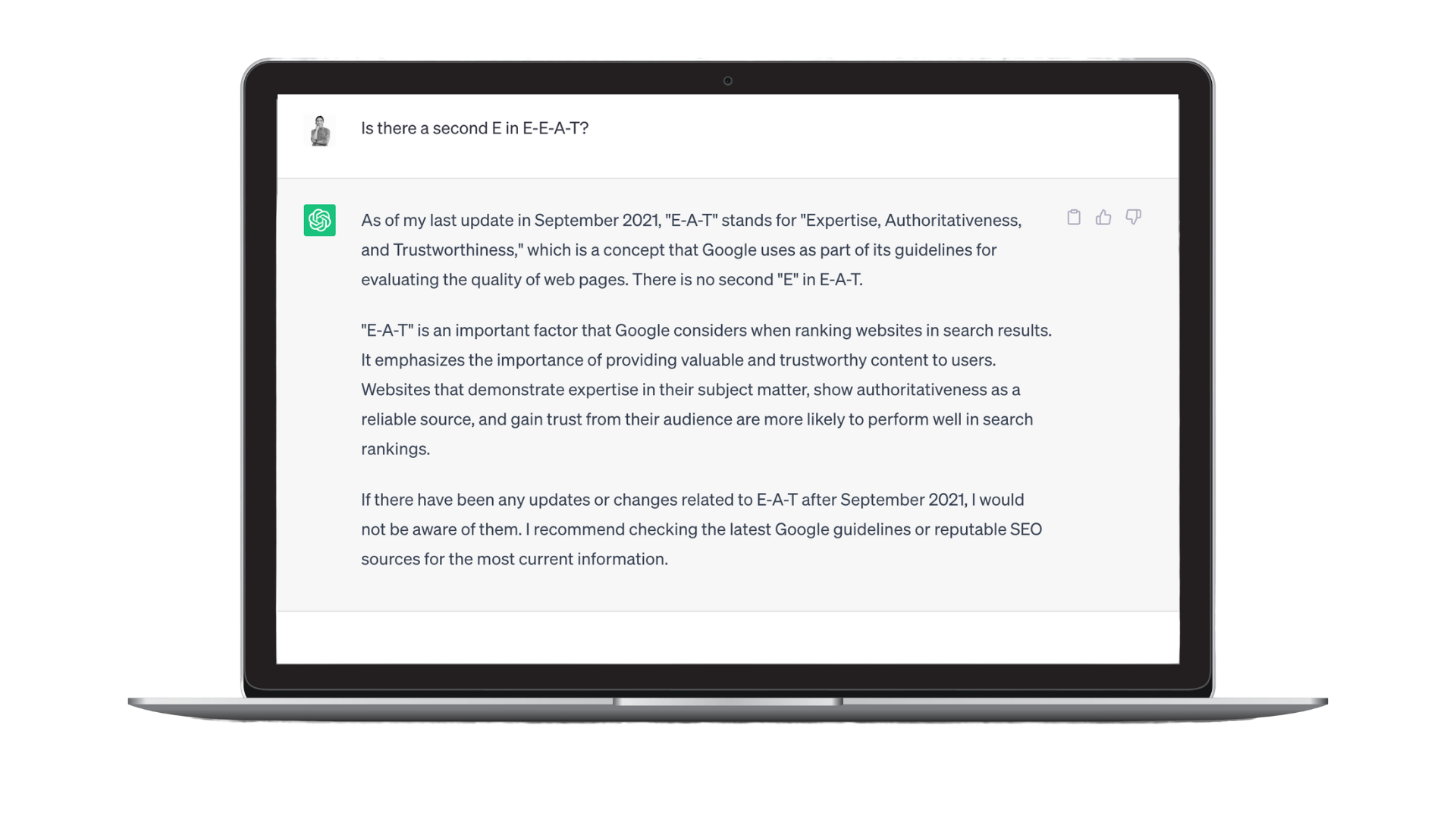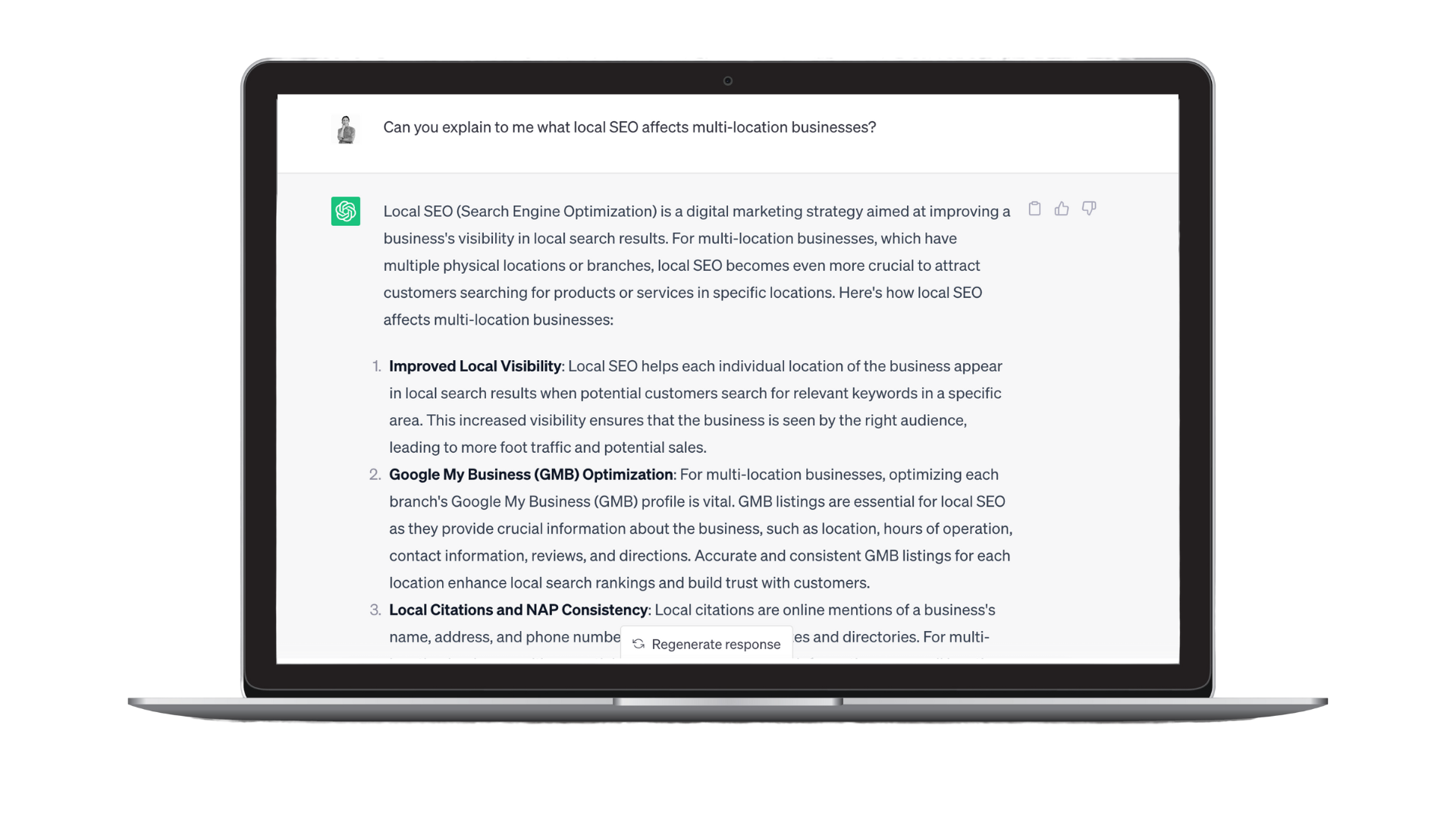The 8 Main Limitations of ChatGPT
Table of Contents
Since being released to the public in late November 2022, OpenAI’s ChatGPT has seen an astronomical rise in popularity. ChatGPT currently has over 100 million users, and the website generated 1.6 billion visits as of June 2023.
The generative AI tool can have human-like conversations with users and quickly answer questions or assist users with tasks. Not only can it respond in multiple languages, but it can also help write or fix code.
Despite its impressive abilities, there are a few significant constraints to ChatGPT. Below, we’ll detail seven of the most common ChatGPT limitations. We’ll also explain how you can overcome some of these constraints and use ChatGPT to your advantage.
1. Data is From September 2021
GPT-3.5 (the free version) only has access to information up to September 2021. Unlike search engines like Google, ChatGPT-3.5 can’t access the latest information or anything after September 2021. This limitation can sometimes lead to false or dated information.
If you want more up-to-date information you’ll have to pay for it. GPT-4, the paid version, also called GPT-Plus and Enterprise, has a knowledge cut-off of April 2024.
Therefore, it’s essential to have a human review ChatGPT’s responses to ensure accuracy, particularly on events after September 2021. For instance, in the example below, ChatGPT-3.5 doesn’t know that there has been a second “E” added to Google’s E-E-A-T.
2. Unable to Access the Internet
As noted earlier, ChatGPT can’t access the internet. Therefore, it isn’t aware of nor can it discuss current events, give you weather forecasts, or tell you current stock prices. We recommend fact-checking ChatGPT’s responses against search engine results to ensure accuracy.
3. Difficulty With Long-form Structured Content
Currently, ChatGPT has challenges generating long-form structured content. Although you can have ChatGPT write to a specific word count, the responses will often repeat earlier points unless told not to. The generative AI struggles with structure and format, sometimes giving list-type points.
4. Provides Biased Answers
One of the main limitations is that ChatGPT’s data is from web scraping knowledge databases, social media, and open data sources. Many of these often derive from humans. Therefore, it has the potential to pick up biased and sometimes prejudiced data. For instance, the AI system can include demographic, confirmation, and sampling biases.
5. Difficulty Understanding the Context
Speaking of bias, the AI model can’t understand specific contexts like humans can, such as sarcasm, humor, or irony. If you add sarcasm to a query, ChatGPT might not understand it and will give you a straightforward answer.
6. Can’t Ask Clarifying Questions
ChatGPT can’t seek clarifications for ambiguous queries. ChatGPT will often guess the most probable response based on the provided context if the input is unclear. That said, if necessary, you can invite ChatGPT to ask for clarification in the initial prompt. Here’s an example of how to include a clarifying question in your prompt:
“I am a multi-location marketer overseeing 65 restaurant franchisees. Can you advise me on improving my local stores’ online reputation management? Feel free to ask any questions you need (1 at a time) for more information.”
7. Often Responds in List Forms
As mentioned when discussing long-form content, without the proper guidance, ChatGPT’s responses will often be in list forms. For instance, it’ll give a general overview of the topic, and then it’ll define certain terms and give recommendations. Here’s an example:
8. Long Sentences and Grammatical Issues
ChatGPT sometimes writes in longer prose unless prompted otherwise. Its sensitivity to grammatical errors, typos, and misspellings is limited as well.
Even if there are no significant grammatical errors or misspellings, ChatGPT might write in passive voice rather than active. This AI’s writing style again brings up the need for human oversight.
How to Ensure ChatGPT Provides Superior Answers
We’ve listed eight limitations of ChatGPT. However, there are tricks and skills you can implement to help counteract some of these limitations. Here are a few:
Review responses: We’ve noted this several times already, but it’s essential that a human review ChatGPT’s responses before relying on them in your work or publishing them. Fact-check responses and check for grammatical errors.
Give better prompts: We recommend giving ChatGPT detailed information when creating a prompt. Here are some tips to generate more accurate and creative responses:
- Give ChatGPT a role or persona, such as, “You’re a world-class local SEO expert who has been in the industry for over a decade and has a background in persuasive writing. Now, write [prompt].”
- You can limit prose by simply putting a word count such as, “keep the response under 75 words,” or ask ChatGPT to limit prose.
- Explain how you want the response to be written, such as, “Please write in paragraphs no longer than two to three sentences. Keep the response persuasive and to the point.”
Here’s an example of a prompt putting all of these tips together:
“You’re a world-class local SEO expert who has been in the industry for over a decade and has a background in persuasive writing. Can you explain to me how local SEO affects multi-location businesses? Your response should contain three paragraphs with one to three sentences in each paragraph.”
If you’re a multi-location marketer not yet using ChatGPT, it’s time to start. Consider partnering with SOCi. We’ve integrated our software with the most advanced system, GPT-4, and know its best use cases.
Request a demo to learn how SOCi utilizes GPT-4 to improve your multi-location enterprise’s localized marketing strategy!

